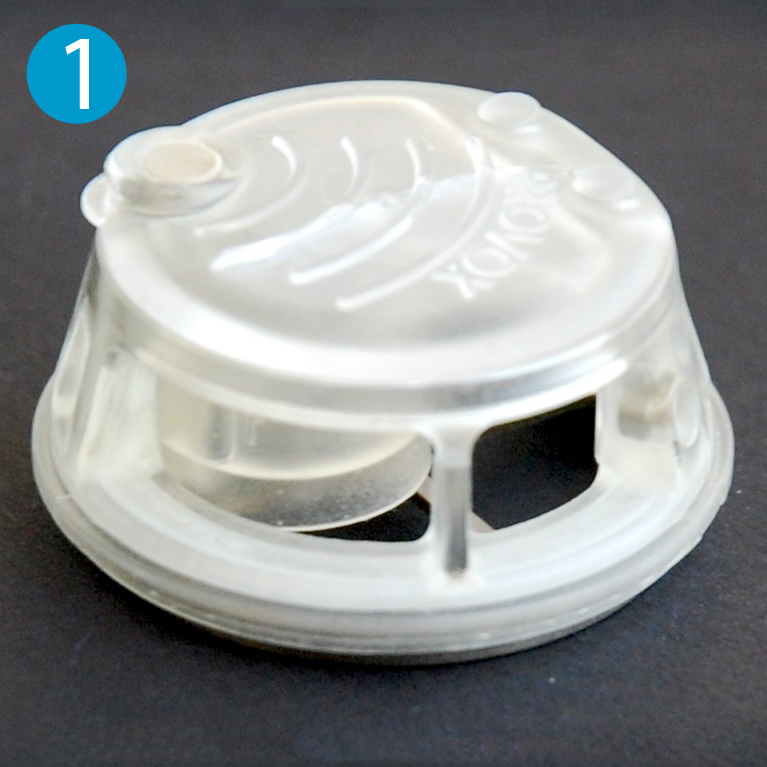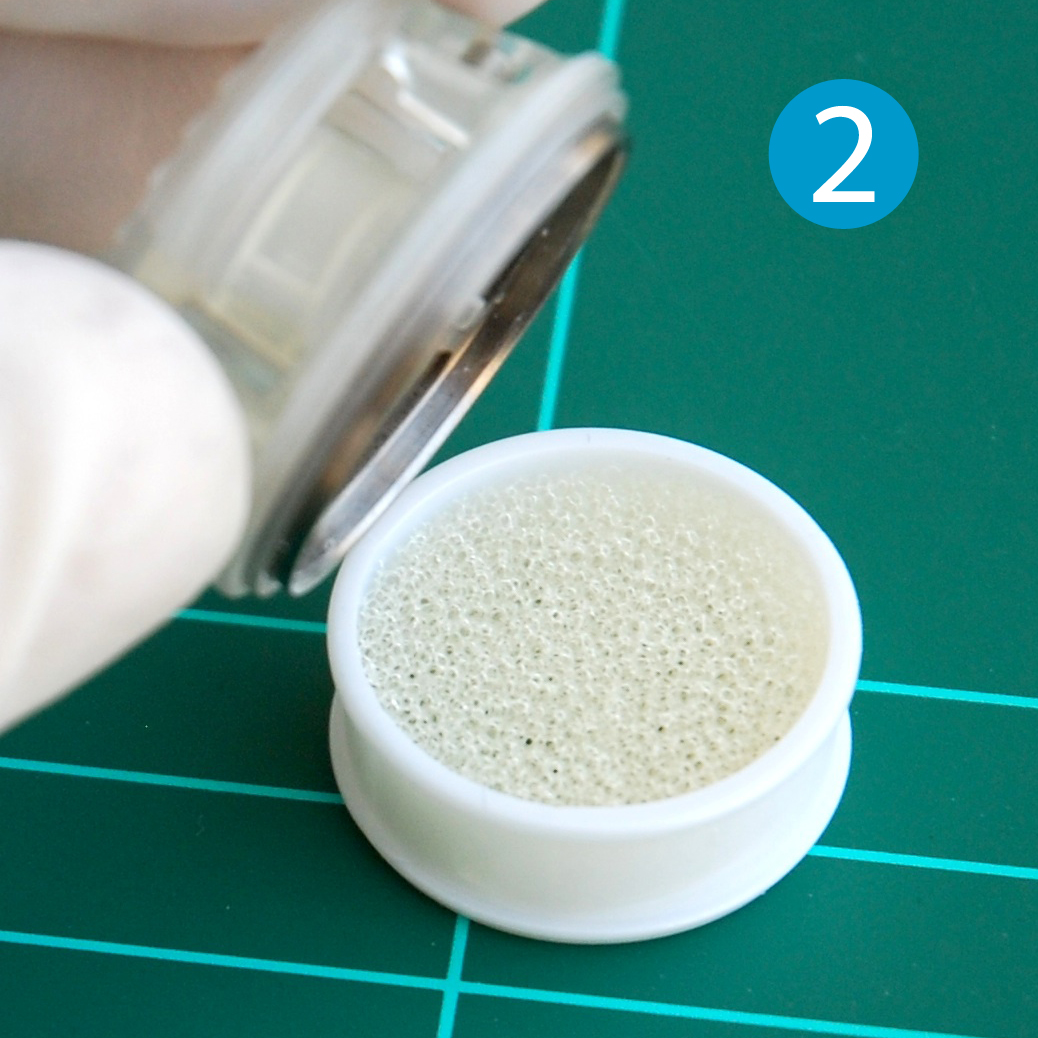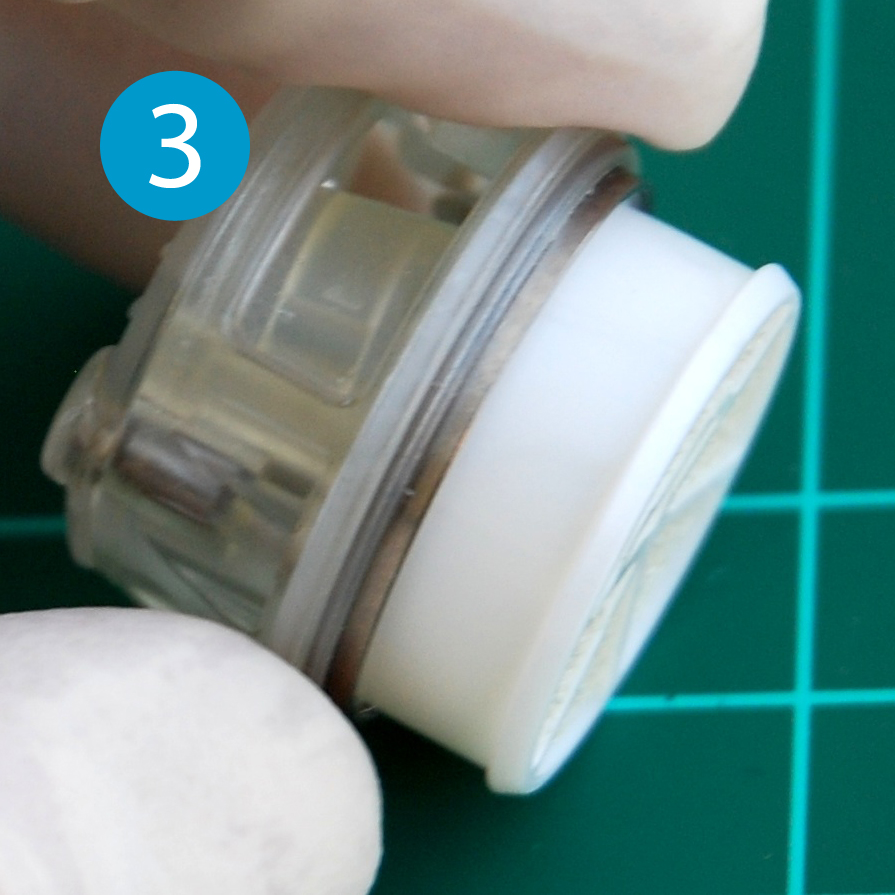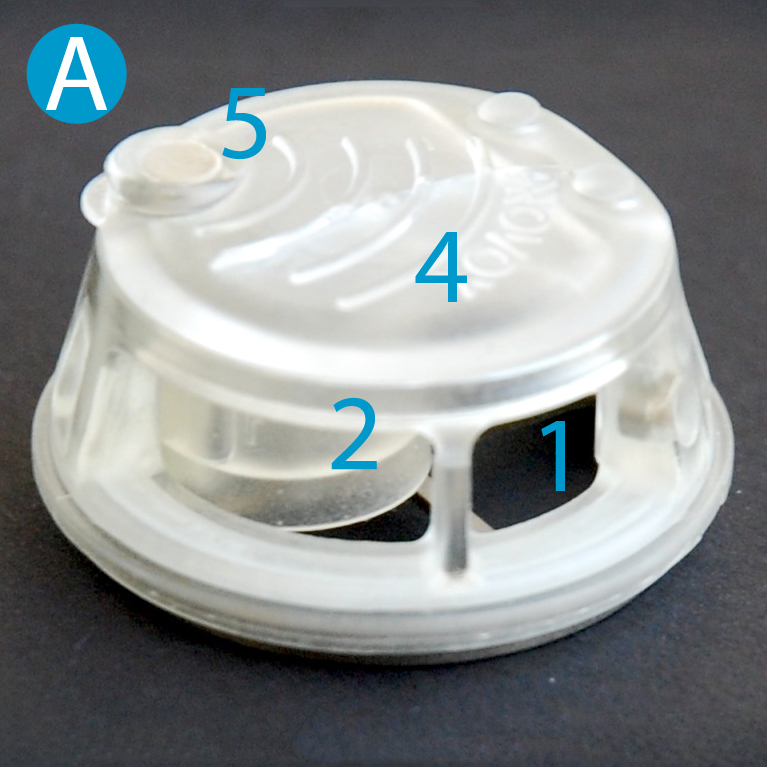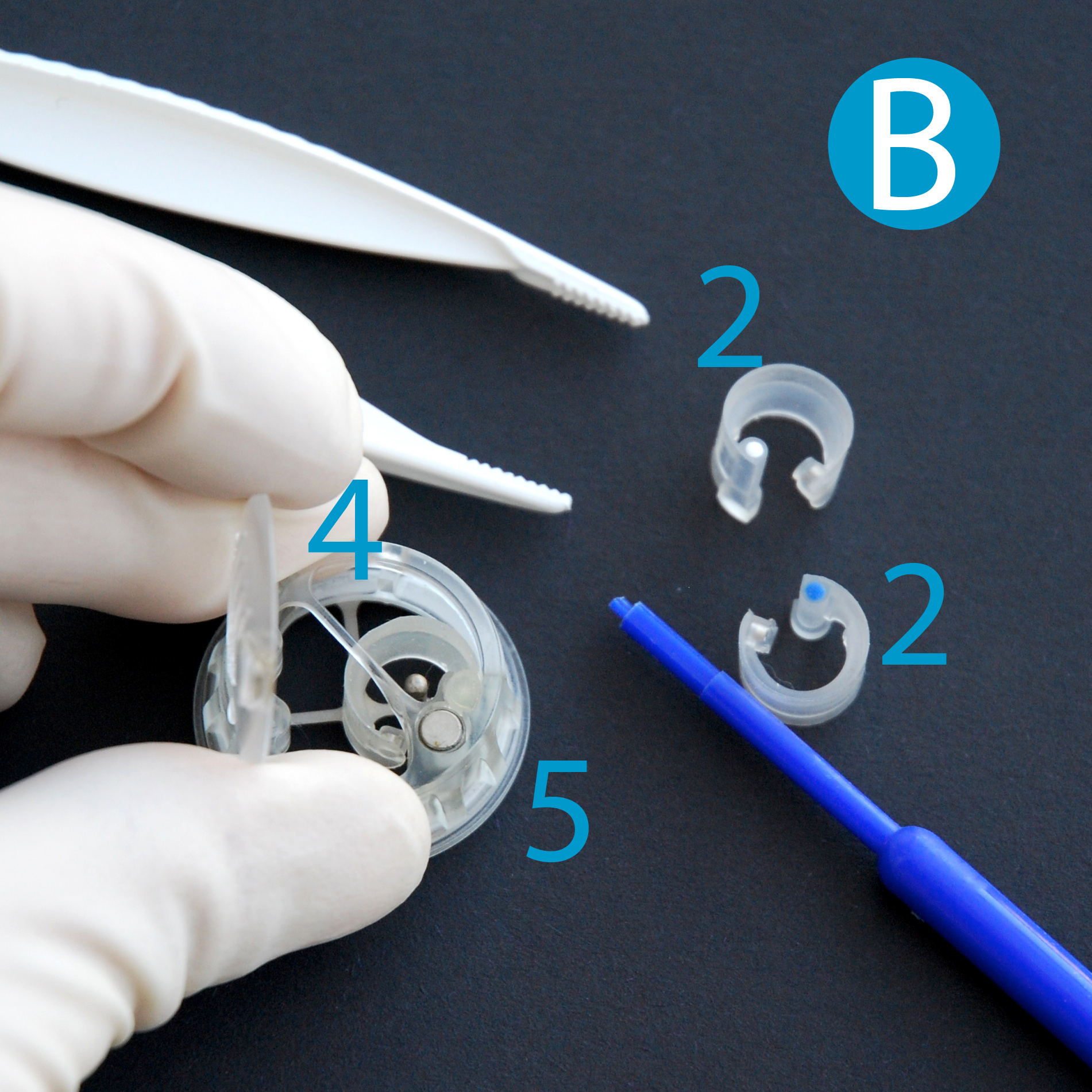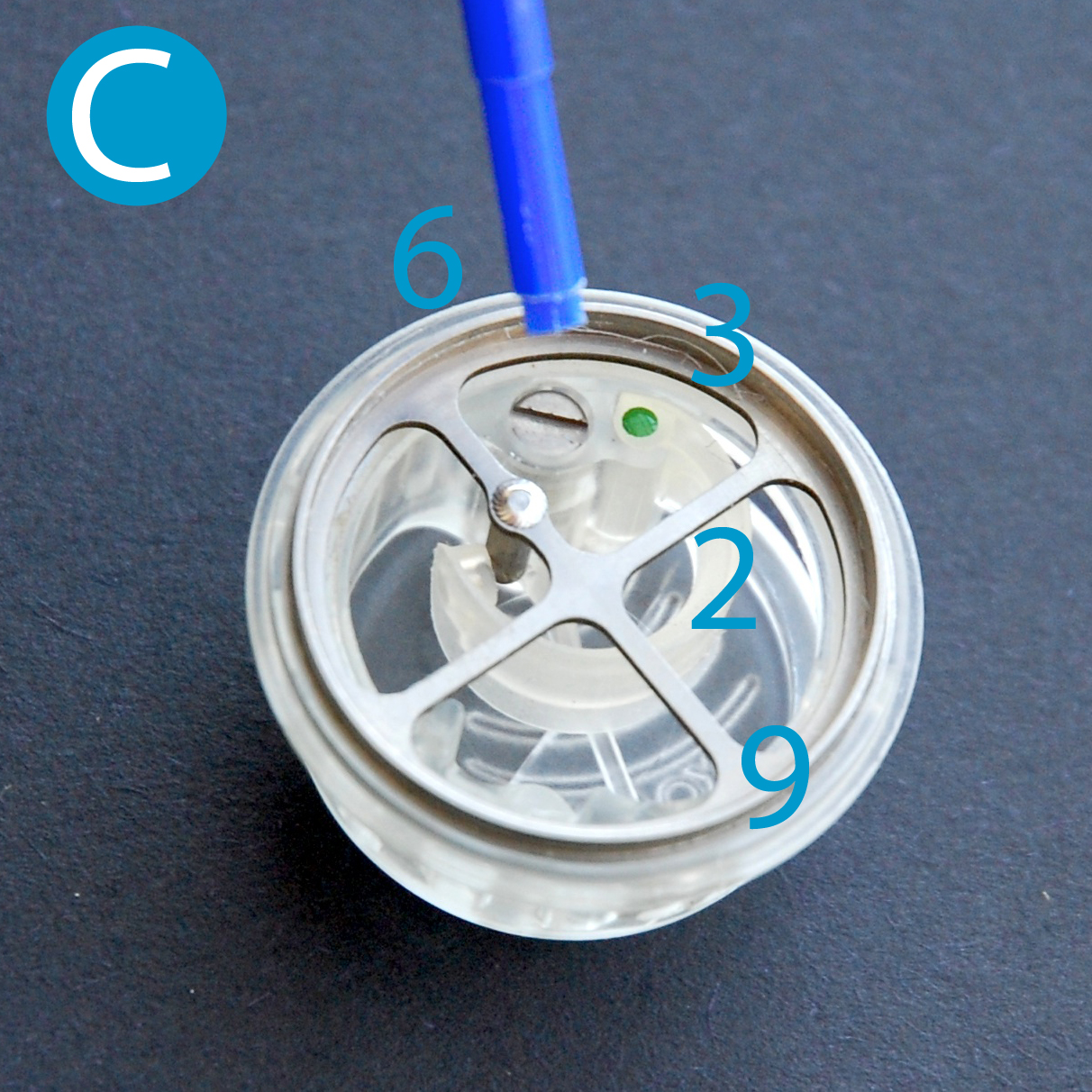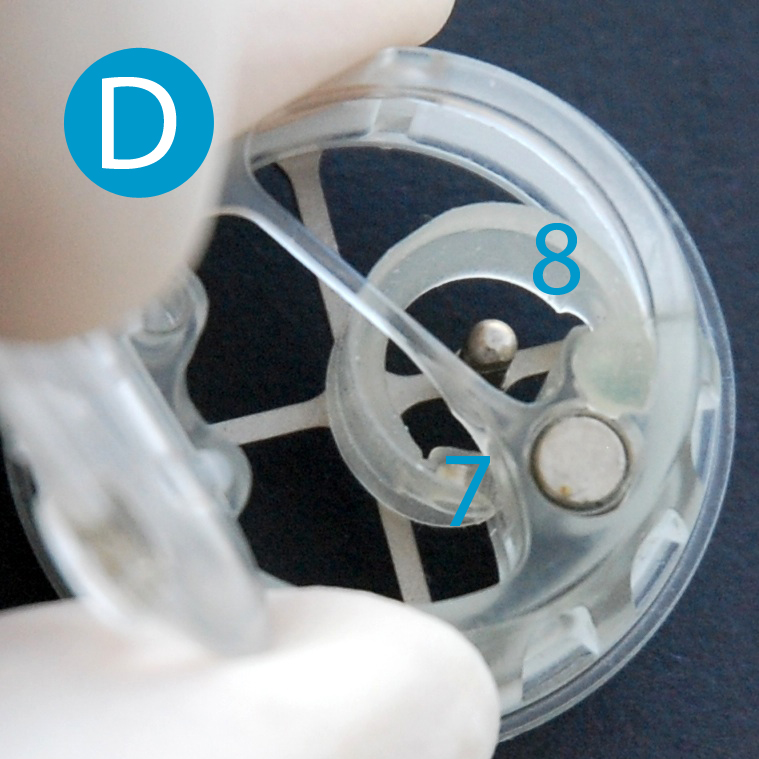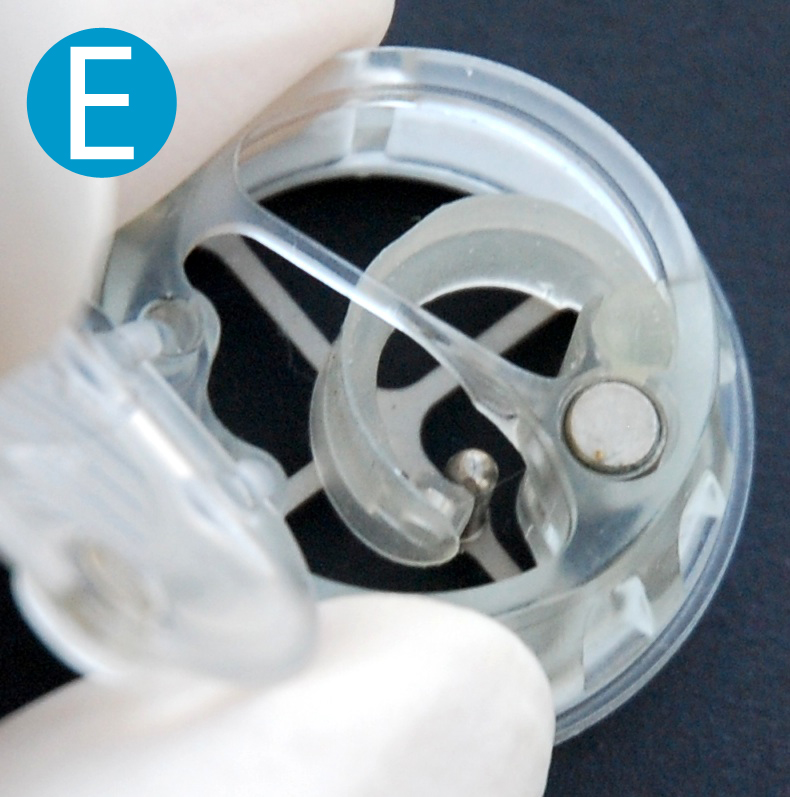Provox® FreeHands HME®
The Provox® FreeHands HME® tracheostoma valve (1) must be placed on an HME cassette (2) before it is used, as the 22-mm connector (3) is only available when the HME cassette in place.
The Provox® FreeHands HME® is a highly developed reusable tracheostoma valve; its two functions (talking and coughing valve) are both controlled by magnets. With normal breathing, air flows through a side opening (1) on the valve into the wind pipe. When the patient wishes to talk, this opening is closed by the speaking valve membrane (2). The speaking valve membrane is available in 3 different hardnesses. The more easily the patient wishes the membrane to close the valve opening, the softer the membrane should be. The firmness of the membrane is indicated by a colored dot (3): white = light, blue – medium, green = firm. We usually start with the white speaking valve membrane.
The speaking valve membrane can be pulled out with the enclosed tweezers and replaced by a different one. To do this, open the cover (4) of the FreeHands HME® as shown in fig. B. The cover of the speaking valve is also the coughing valve. The closing force of the coughing valve is determined by magnets (5). This magnetic closure is adjusted by means of a screw (6) on the back of the FreeHands HME®, using the enclosed screwdriver.
A second magnet is used for the fine adjustment of the speaking valve. There is a magnet in the free end of the speaking valve membrane (7) for this purpose. This is secured in the desired position via the contact to a metal bar (8; fig. E). The speaking valve membrane cannot then be placed over the side air outlet, and the speaking valve is switched off. This valve position is also called the “breathing position". It is adjusted by turning the valve on its metal ring (9), and is selected, for instance, if the patient is performing a strenuous physical activity.
Disadvantages of the Provox® FreeHands HME®
- Complicated to set up, although it only has to be done once
- The filigree design is not suitable for all patients
- Relatively expensive
Advantages of the Provox® FreeHands HME®
- Well functioning and easy to set coughing valve that closes automatically
- An HME must be used
- Breathing/speaking characteristics selected by exchangeable speaking valve membranes and adjustable magnetic fixation of the speaking valve membrane
- Small and flat, optically appealing shape
- Non-fatiguing magnetic mechanisms
Literature on Provox® FreeHands HME® valve:
- Hilgers FJ, Ackerstaff AH:Development and evaluation of a novel tracheostoma button and fixation system (Provox LaryButton and LaryClip adhesive) to facilitate hands-free tracheoesophageal speech. Acta Otolaryngol. 2006 Dec;126(11):1218-24
- Lorenz KJ, Groll K, Ackerstaff AH, Hilgers FJ, Maier H:Hands-free speech after surgical voice rehabilitation with a Provox voice prosthesis: experience with the Provox FreeHands HME tracheostoma valve system. Eur Arch Otorhinolaryngol. 2007 Feb;264(2):151-7.
- Op de Coul BM, Ackerstaff AH, van As-Brooks CJ, van den Hoogen FJ, Meeuwis CA, Manni JJ, Hilgers FJ:Compliance, quality of life and quantitative voice quality aspects of hands-free speech. Acta Otolaryngol. 2005 Jun;125(6):629-37
- Tervonen H, Bäck L, Juvas A, Räsänen P, Mäkitie AA, Sintonen H, Roine RP, Vilkman E, Aaltonen LM:Automatic speaking valve in speech rehabilitation for laryngectomized patients. Eur Arch Otorhinolaryngol. 2005 Oct;262(10):816-20.
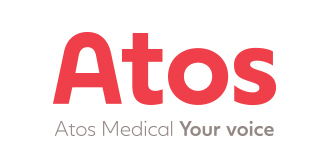
Atos Medical GmbH
Mülheimer Straße 3-7
53840 Troisdorf

